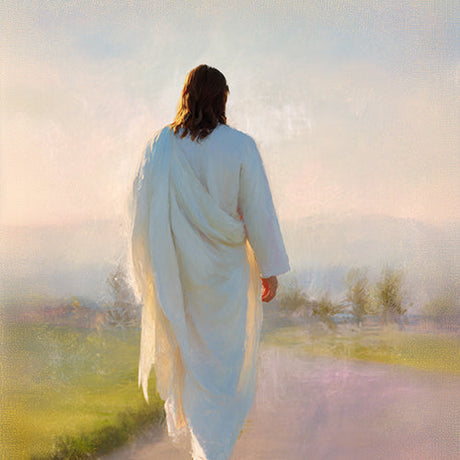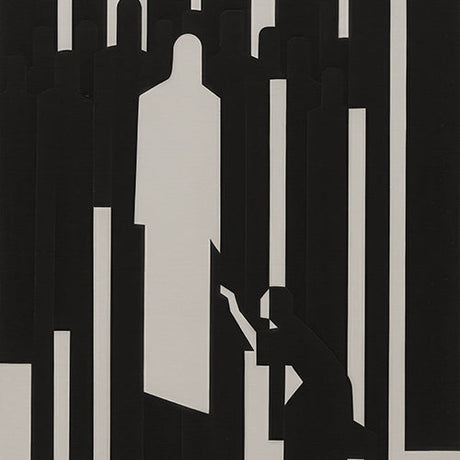Have you ever felt goosebumps the moment you step into a cathedral and see all those breathtaking paintings, statues and murals? All around, vivid colors and striking images draw you in and mesmerize you.
But what are some of the purposes of Christian art? How does it differ from other kinds of art?
In this post, we’re going to explore this big question in an easy-to-understand way. You’ll see just how deeply Christian art has shaped the faith of believers for centuries. We’ll look at how it can tell Bible stories, inspire worship, help with prayer, bring awareness to cultural issues, and much more. By the end, you’ll walk away with a fresh perspective on biblical art—and maybe a new appreciation for whatever Christian paintings or sculptures you come across next.
Also, we’ll share what a Christian should believe about the arts and entertainment in general. After all, God gave us creativity for a reason. Let’s dive in!
1. Christian Art as a Form of Worship and Devotion
For many believers, Christian art is more than just a pleasing picture on a wall—it’s an act of worship. When an artist paints a scene from Jesus’ life, or carves a sculpture of the cross, they’re often pouring their faith, emotions, and prayers into each stroke or chisel. Much like singing a hymn or praying in church, creating art can be an act of praise directed toward God.
- Meditation and Prayer: Staring at an image of Jesus teaching, healing, or being resurrected can lead to deeper thought about who He is. It can stir hearts to praise Him in silent prayer.
- Glorifying God’s Creativity: We reflect God’s image when we create beauty out of the raw materials He provides—paint, wood, metal, or even pixels on a computer screen.
Why This Matters Today
In today’s world, we can still use Christian art in our private or public worship. Perhaps that’s something as simple as hanging a piece of Christian wall art in your home, so that every time you see it, you’re reminded of a biblical truth or a promise from Scripture. Even if it’s minimalist Christian art—a few lines suggesting a cross or a scripture reference—it can nudge your heart closer to prayer and praise every day.

2. A Powerful Teaching Tool: Telling Biblical Stories Through Art
Throughout much of church history, many people couldn’t read or didn’t have access to Bibles. Christian art stepped in as a silent teacher. Stained-glass windows, frescoes on walls, and elaborately illustrated manuscripts were among the first ways believers learned key Bible stories.
- Visual Parables: In places where literacy rates were low, art was a direct line to biblical truths. An icon of the Good Shepherd or a painting of the Last Supper literally showed what words in Scripture taught.
- Guides to Doctrine: Some pieces focused on essential doctrines—like the Trinity, Christ’s divinity, or the Resurrection. They essentially gave believers a “picture book” of their faith.
Today, we still see how images can impact understanding. If you’ve ever seen a dramatic painting of the Crucifixion, you’ve likely felt the intensity of Christ’s sacrifice in a deeper way than from mere words on a page.

Encouraging Children and New Believers
One beautiful way churches now use biblical art is to help kids or new believers grasp big truths about God. When you walk through Sunday School halls decorated with Bible art—like big cartoon versions of Noah’s Ark or David and Goliath—those images stick in a child’s mind. These pictures aren’t just cute; they spark interest and anchor biblical stories in young hearts.
3. Evangelism: Sharing the Gospel with Beauty and Creativity
Another purpose of Christian art is spreading the Gospel. Even if we live in a digital age, it’s incredible how powerful a single image or artwork can be. A painting portraying a biblical scene can strike a chord with someone who might never open a Bible or set foot in a church.
Placing an inspiring piece of Jesus art at home or in a workplace might open up spiritual conversations. People might ask, “Where did you get that? What does it mean?” and—voilà—you get to share your faith.
A Universal Language
Art can also transcend language barriers. If you’ve traveled abroad, you may have experienced how a painting in a museum or a fresco in a historical church speaks volumes, even when you don’t understand the local language. It’s much like music—art can convey emotions like hope, awe, or reverence, bridging cultural gaps. That’s why many Christian missionaries and ministries use abstract Christian art or similar forms in cross-cultural outreach. The goal: help people experience a glimpse of God’s love before they fully comprehend all the words that go with it.

4. Symbolism and Meaning: Communicating Deeper Spiritual Truths
One of the richest aspects of Christian art is the use of symbols. Symbols act like little secret codes, layering meaning into a painting or a statue. You might see:
- Fish (Ichthys): An early Christian symbol for Jesus and a discreet sign of faith during Roman persecution.
- Dove: Representing the Holy Spirit.
- Colors: Blue for heaven, red for Christ’s sacrifice, white for purity, gold for God’s majesty.
- Sheep: Symbolizing believers or referencing Jesus as our Good Shepherd.
These symbols are not random; they’re drawn from Scripture or tradition to communicate truths that words alone might not capture. They can stir your soul when you realize the hidden meaning behind them.
Abstract and Contemporary Forms
Even in very modern, edgy, or abstract Christian art, these symbols or biblical themes often show up in creative ways. An abstract swirl of red might represent the cleansing power of Christ’s blood, while a splash of white might reflect the hope of resurrection. This can create thought-provoking experiences, pushing viewers to contemplate Scripture’s truths in unexpected ways.
5. Christian Art as a Source of Beauty and Inspiration
What are some of the purposes of Christian art if not to highlight beauty and fill us with wonder? We were created with senses and a desire to appreciate color, form, and harmony. Our God is the ultimate Creator, and from the beginning in Genesis, we see Him labeling His works as “good.”
Fostering Awe and Wonder
Many times, walking into a gallery or glancing at a Christian painting that portrays the majesty of creation or the kindness of Christ can fill our hearts with awe. This sense of wonder points us back to the God who gave us both the ability to create art and the capacity to enjoy it.
Encouraging Personal Reflection
Sometimes, a piece of art touches our emotions in ways words can’t. It might remind you of a specific verse or a personal testimony. If you’ve ever stared at a painting and felt unexpectedly moved—maybe tears formed or hope swelled in your chest—that could be God gently stirring you, reminding you of His presence.

What Should a Christian Believe about the Arts and Entertainment?
Now that we’ve covered what are some of the purposes of Christian art, let’s tackle a broader question: What should a Christian believe about the arts and entertainment? Are we supposed to avoid them altogether—worried we might enjoy something “sinful”? Or should we embrace them wholeheartedly?
Recognize God’s Good Gift
First off, the Bible consistently points us to a creative God who enjoys beauty and design. The arts (visual, musical, dramatic, literary, and more) can be channels for truth, healing, joy, and even correction. If we see them as a gift from God rather than a threat, it changes our attitude. We stop asking, “Is it okay to enjoy art?” and start asking, “How can art deepen my connection with God and show His goodness to others?”
Exercise Discernment
That said, the Christian life calls us to discernment. In a world brimming with movies, music, paintings, social media content, and more, not everything is uplifting or God-honoring. As believers, we should prayerfully test:
- Content: Does this piece of art glorify violence or promote things that go against love and righteousness? Or does it handle difficult themes in a way that encourages hope, redemption, or empathy?
- Heart Posture: Are we seeking God’s truth or just escaping into entertainment? Are we being shaped in negative ways, or are we growing in compassion and wisdom?
Paul says in Philippians 4:8 we should think on things that are true, honorable, just, pure, lovely, and praiseworthy. This doesn’t mean we only watch overtly Christian movies or only read Christian fiction, but we should be mindful of how the content influences our hearts.
Engage, Don’t Just Consume
A lot of times, entertainment can become a mindless escape. Instead, Christians are invited to engage. If you watch a show or look at a piece of modern art, reflect on it—What’s the worldview here? Are there redemptive points? Does it reveal something about human nature that Scripture also addresses?
When we engage thoughtfully, we can either confirm biblical truth or identify error. For instance, a secular song might reflect a deep longing for love or acceptance that the Gospel ultimately answers. By engaging, we develop empathy for the singer’s perspective and look to meet that longing with the truth of Christ.
Bringing It All Together: Embracing Art in Our Faith Journey
Christian art is a powerful tool that can do so many things—teach, inspire worship, spread the Good News, foster community, and shine a light on important cultural topics. It doesn’t replace Scripture or the personal work of the Holy Spirit, but it can greatly enrich our faith experience. We can learn to use, create, and enjoy art in ways that honor God and build up ourselves and our communities.
If you enjoy minimalistic or modern designs, you might also be interested in minimalist Christian art or abstract Christian art that captures biblical truths in fresh, simple forms. Or if you love classical styles, you’ll want to see our Christian paintings or Bible art guides for deep dives into historical masterpieces.

Practical Tips for Using Christian Art in Your Life
Wondering how to practically integrate Christian art into your daily routine? Here are a few quick ideas:
- Decorate a Prayer Corner: Set up a small space in your home with a piece of art that reminds you of Jesus’ love or a favorite verse. Let it prompt you to pray when you pass by.
- Gift It: Instead of a typical gift card, consider Christian paintings or a thoughtful piece of Scripture art for a friend who needs encouragement—or even for your church leaders. If you’re looking for fresh inspiration, check out our post on 10 Art Pieces to Gift Your Pastor. It’s packed with ideas that are both meaningful and visually striking, ensuring your gift aligns with their faith and calling.
- Journal Sketches: If you like to write in a prayer journal, add small doodles or sketches that reflect what you’re learning in Scripture. Sometimes, a simple drawing of a dove or a cross can help you meditate on God’s truth.
- Attend a Faith-Based Art Event: Look for local Christian art exhibitions, music events, or creative workshops. This can be a way to meet fellow believers and share the Gospel with curious attendees.
- Serve with Your Talent: If you’re an artist, volunteer to help create sets for church plays, design slides for worship services, or paint murals in children’s ministry areas. Your creativity can be a blessing.

Conclusion: Celebrating the Divine Artist
So, what are some of the purposes of Christian art? We’ve seen how it can serve as a form of worship, a tool for teaching Bible stories, a vehicle for evangelism, and a voice in culture. It can symbolically communicate deeper truths, reflect God’s beauty, spark meaningful community, and encourage personal devotion. Above all, it points us to Jesus, the ultimate reason and inspiration behind it all.
What should a Christian believe about the arts and entertainment? Simply put, that God is the origin of creativity. Artistic expression is one powerful way to worship Him, connect with His Word, and share His message with the world. While we need wisdom and discernment, we can also embrace the arts as part of the good gifts He’s given us. We have the freedom in Christ to create and enjoy art that glorifies Him and blesses others.
Remember, you don’t have to be a professional painter or sculptor to celebrate art. You might simply hang a meaningful piece of Christian wall art in your living room or hum your favorite worship song in the shower. Whichever way you choose, know that creativity—like faith—is a journey. May yours be filled with color, light, and the loving presence of the Divine Artist who started it all.
You might find these articles useful:






